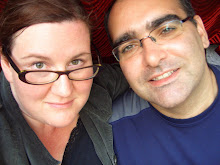
La Paz was the highest capital city in the world. But high also had other connotations when you were speaking of Bolivia. The president, Evo Morales is a coca farmer and has made himself (un)popular abroad and at home by defending the rights of his fellow coca farmers. Of course, he’s defending the rights of the farmers to grow and harvest the leaves of the coca plant. A millennial old indigenous remedy for altitude sickness as well as a key plant in the Aymara and Quechua religions. But abroad, the coca plant is betterkknown as the origin of cocaine, known in many parts of the world as Bolivian Marching Powder. It’s for this reason that the American DEA fought to get into the country (although Morales has since kicked them out). And it’s the reason some backpackers put Bolivia on their must-do list. They come to partake in the nameless, addressless, after-hours cocaine bars that are sprinkled throughout the city. If you want to sample you can easily find out where to go, any taxi driver will help you. But unlike many of the young gap year travelers, it wasn’t the reason we were in town so we can’t help you out. Adrian was happy with the baked beans with his full English breakfast and I was happy enough to just wander the streets of the city.
To educate the masses about coca, the government had set up the Coca Musuem. Inside it was just two small cramped rooms chock full of displays visited by a mixture of those party-happy gap years probably hoping for a free sample and travelers like ourselves hoping for a more educational experience (sorry no photos allowed inside). We were given a booklet in English to read as we walked through. And there was a lot to read. The museum explained the farming of the plant, harvesting of the leaves and their traditional place in Bolivia’s history. We’d tried coca leaves in Peru to help with the altitude sickness but the taste was worse than the altitude sickness. Coca tea was readily available but tasted and had as much punch as any herbal tea. The leaves wer harmless and this is what the first half of museum was trying to celebrate. But it was cocaine that was the real money maker for the farmers (despite the president’s plea to the contrary) and the second half of the museum was dedicated to the refinement and consequences of the drug. It was a good attempt but was missing something. Years back I’d seen a youtube video on the jungle cocaine factories. It showed how the plant was refined – in detail and without the innocuous-looking chemical diagrams in the museum. In this video you saw what those chemical compounds were – gasoline, paint thinner amongst others – that were mixed with the plant to extract the drug. Working with these compounds, shortened the lifespan of the workers (if it didn’t kill them) and created a drug that should have more chemical warnings than a toxic waste dump. Probably the best anti-drug video I’d ever seen and much needed in this museum. As it was those who came here to be educated were, but those who came here straight from their all night party, left looking for the next party – not the result the museum hoped for.
After our morning at the Museo de Coca we headed down the pretty Prado to the newer part of the city for something different. By newer, I meant the buildings were only a hundred years old not five hundred. Although most were being left to crumble so they could be knocked down and replaced with steel and concrete towers. However there were a couple still standing and occupied. One of them was home to the Museo de Arte Contemporeano. The art inside was okay, some was even good, and most was for sale. But the house was amazing and at times outshone the art it was displaying. After the heaviness of the Coca Museo, this small art gallery was just the breath of fresh air we needed.
We headed back to hostel to check out and get ready for our night bus to Santa Cruz. Lulu was there so we said goodbye and wished her good luck. Then we grabbed our bags and flagged down a cab to take us to the bus station. It took us a while to find the right kiosk as all the bus companies seemed to be named Transcopa A thru Z and we needed to find Transcopa MEM. But we were early and found it eventually. The bus was comfier than we expected and although there were no blankets, pillows or food it was good enough for our 14 hour ride to Santa Cruz near the jungles where those Andean coca leaves were refined into cocaine. Hopefully, the distance to Santa Cruz would deter those gap year partiers from trying to make their way to the source.




No comments:
Post a Comment